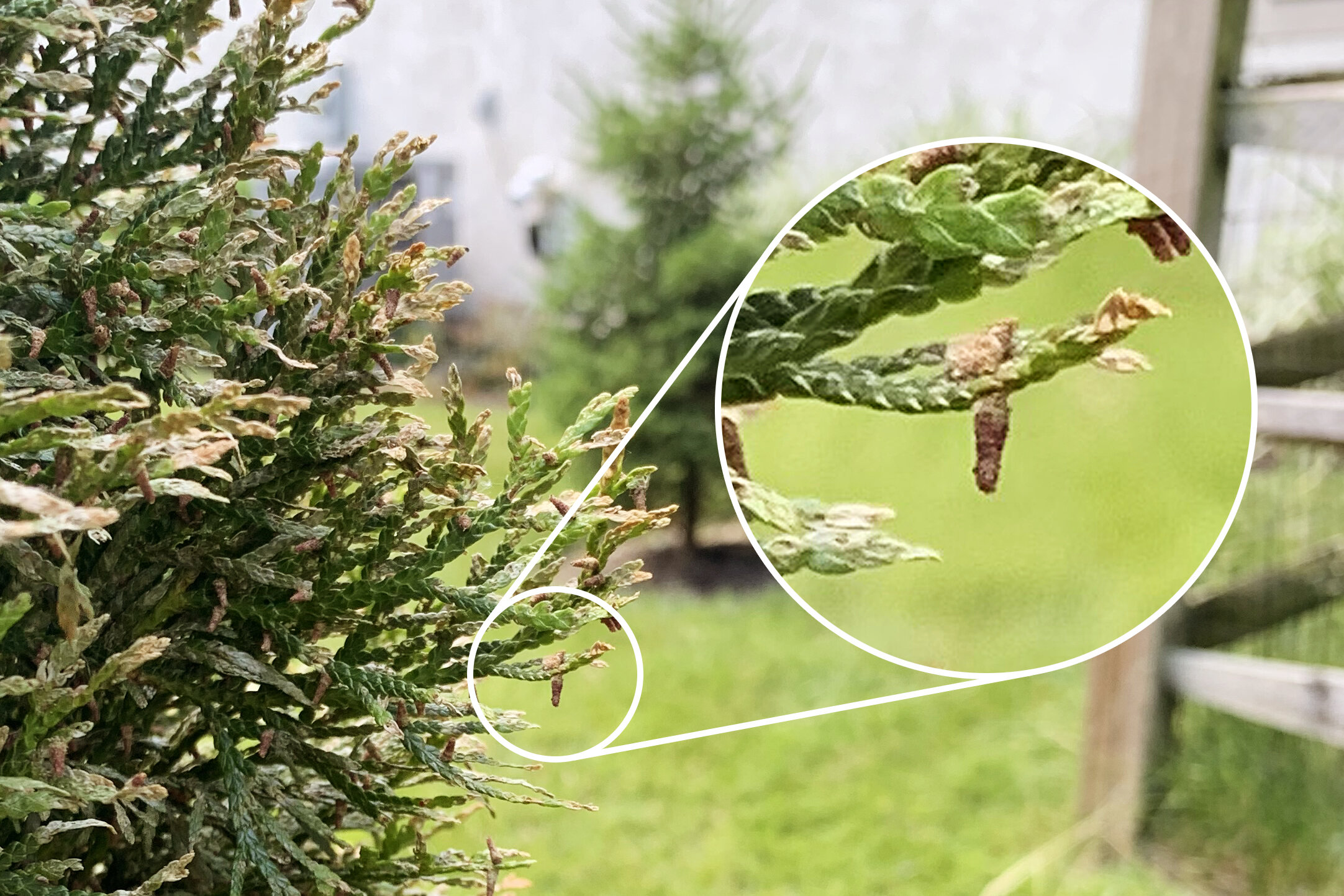Bagworms, that is.
This interesting insect is not really what we would usually call a worm, but is considered a caterpillar instead. While most caterpillars pupate into a flying adult (moth or butterfly), the female of this species never emerges from her mobile home. The male does, and he flies to the female so they can engage in activities that ensure the species does not die out.
After mating, both male and female eventually die, leaving many eggs within the female bag. These eggs hatch the following spring to cause more foliar damage as they feed on many kinds of plants, sometimes causing irreversible damage and death if left unchecked.
I focus on this pest for this article because I have been watching for its emergence this season wondering when it would finally show up. Early June is usually when we start seeing the new generation of this pest (630 growing degree days, according to the OSU OARDC calendar available here). Last season I recall bagworms emerging later than usual, and I was curious what would happen this year given the very unusual spring we have had. Yesterday I spotted my first bagworms in a client’s back yard – the smallest I have ever seen yet. The plant had been damaged in the past season by bagworm feeding, and the old adult bags were clearly visible. When I looked closely, I could just make out the very tiny, brand new bagworms moving about as they fed on the plant.
Very tiny, brand new bagworms
They had also established on the neighboring, more healthy, plant.
I checked the current growing degree days, and we are at 959 today for the area I was in. I can’t say when these baby bagworms were hatched, but it has not been long. I also do not know if there is a period between the hatching of the eggs and the emergence of the caterpillars from the old cocoon. As with everything in nature, there is always variation from season to season, and from place to place within the same season, so scouting is always the best way to determine when pests are present or not.
Bagworms feed on a number of species, but evergreen species are the most at risk of permanent damage or death. If an evergreen is defoliated rapidly by large quantities of these mobile marauders, it will likely not have the ability to rapidly regenerate foliage to make up for that which was lost. I commonly drive past juniper, spruce, and arborvitae that have been sheared of green foliage by bagworms.
Thankfully, if caught early, this insect pest is relatively easy to control. Two treatments are sometimes recommended to make sure any late starters are caught during the second round. I routinely show clients what a bagworm looks like because they are very easy to miss within a plant. As they feed and grow they use foliage from the plant they are feeding on to build the bag that gives them their name. This means they look like part of the plant. Once identified though, they are easy to spot. If treatment is no longer an option (when the pest is settled for the winter or no longer actively feeding), removal of the bags by hand is a very good way to control this pest. This method works best on smaller plants since it is essential that every single bagworm is removed from the plant.
Thank you all for taking the time to read this article. If it is shorter and less philosophical than usual, it is because we are striving to keep up with the all the requests for service that keep coming in. I look forward to being able to take a slow breath later in the season and make some time for reflection. In the meantime, thank you very much for trusting us with your trees.
Your friendly neighborhood arborist,
José Fernández | Regional Manager, Russell Tree Experts
José became an ISA Certified Arborist® in 2004, and a Board-Certified Master Arborist® in 2015. Currently he is enrolled at The Ohio State University pursuing a Master’s Degree in Plant Health Management. José likes working around trees because he is still filled with wonder every time he walks in the woods. José has worked at Russell Tree Experts since 2012.
[Quick fact checks from https://bygl.osu.edu/node/1048 and https://www.mortonarb.org/trees-plants/tree-and-plant-advice/help-pests/bagworms.]






